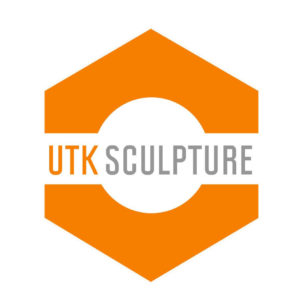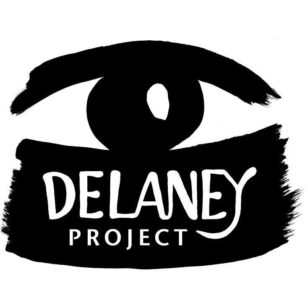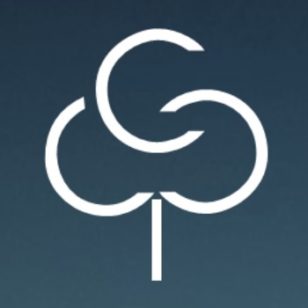INTERVIEW: BRIANNA BASS
JAN. 27, 2020
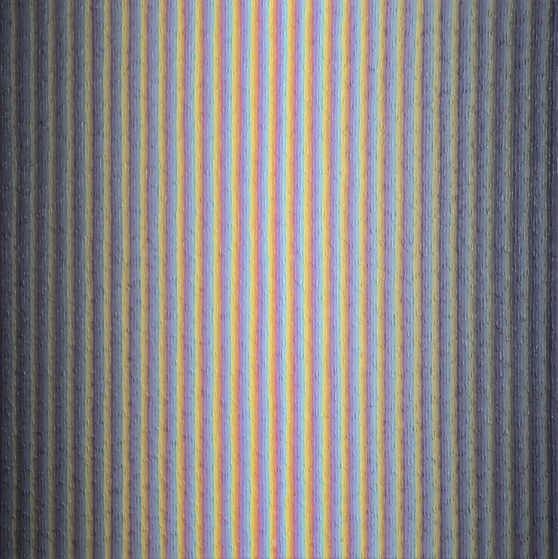
INTERVIEW: BRIANNA BASS
JAN. 27, 2020
Rachel Bubis: You explain how your experience with hearing loss gave you insight into the “structural aspects of communication,” particularly in how you relate the language of sound and color in your paintings.
Brianna Bass: The relationship between color and sound first became apparent to me when I started making the vertical prism paintings. I sensed something musical about them, and realized that they remind me of piano keys. Each color plays a specific role in a larger system, and even if some of the information is missing (a silent key), the predictive structure is so firmly in place that we still know what should be heard.
I have difficulty hearing the frequencies associated with speech. It is mild enough that I can get by in most situations, but I still struggle to hear people every day. I realized, through this work, that my compulsion to create full representations of data (the data of light) comes from this daily frustration and the corresponding anxiety. I think that by missing pieces of conversation, I am made sensitive to the machinations of communication that we all experience. We rely on our knowledge of predictive systems to determine, in streams of sound and movement, what has meaning. What I know about the subject is a predictive system; what I know about the person, about sentence structure, how they speak, how the mouth is moving, my familiarity with language as a whole, and so on. In my paintings, I want to establish a primary predictive framework, and then complexify, confound, elevate, and destabilize that sensation of wholeness in varying degrees.
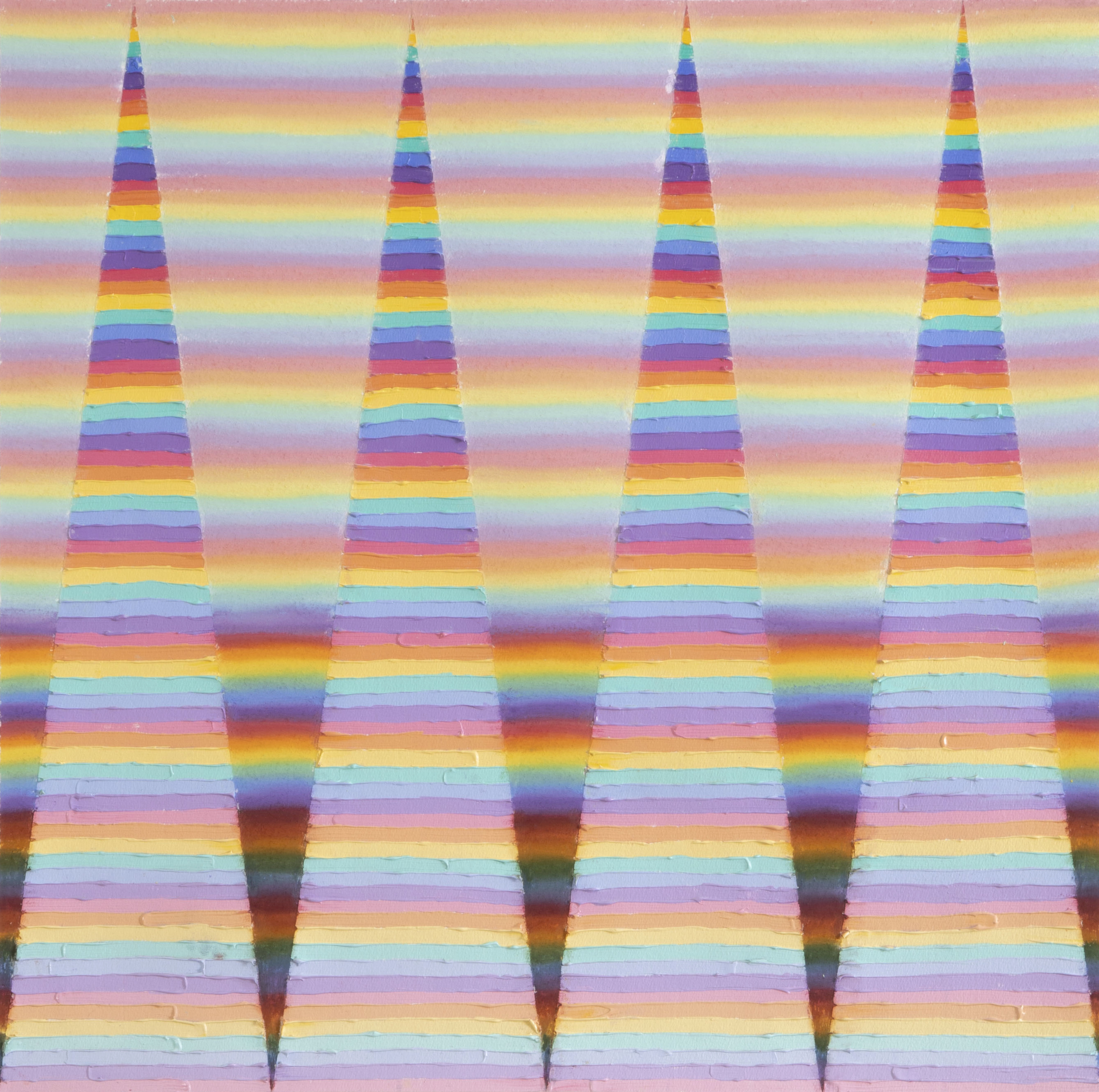
Brianna Bass, Oppositional Framework (courtesy of the artist)
RB: What’s your process of choosing colors and patterns/translating sound structures to paint?
BB: To translate sheet music to color fields, I applied the components of the spectrum to the notes in the musical scale, with red representing "C," orange representing “D,” and so on. Each mark occupies the space of an eighth note. Flats and sharps are shifted by half a hue. Rests are grey. I chose to equate "red" and "C" because they are both beginning places in their respective scales. Though this base relationship is somewhat random, the corresponding harmonies still stand when embedded in a system of contingent relationships. It is important to me that the paintings don't read as an interpretive personal manifestation of my opinions on color, like why this note sounds like green. Instead, that they provoke an experience of how chromatic harmonies shift and communicate throughout the music, like an (imperfect) illustration.
This is the same attitude I employ with other patterns in my work. They are usually the enactment of a process upon the established predictive framework. Sometimes it is simple, like “get to black by the edge of the frame,” and sometimes it is more complex.
RB: You say your work references “meteorology and breath” through “the catalogue of touch.” Can you elaborate?
BB: By “catalogue of touch” I am referencing the framework of visible brush strokes in most of my paintings. They shift focus from the image to the process by acting as a record of movements. By comprising a hand-built system, they allow for a more emotional, personal reading of the paintings. In the vertical prism paintings, marks rise on one side and fall on the other, giving the impression of cycles. The perpetual up and down reminds me of breathing, a meditative acceptance of things, and stillness in movement. The paint also rises and falls like drops of rain, referencing the the water cycle, a larger, self-healing, powerful system that we are embedded in and depend on.
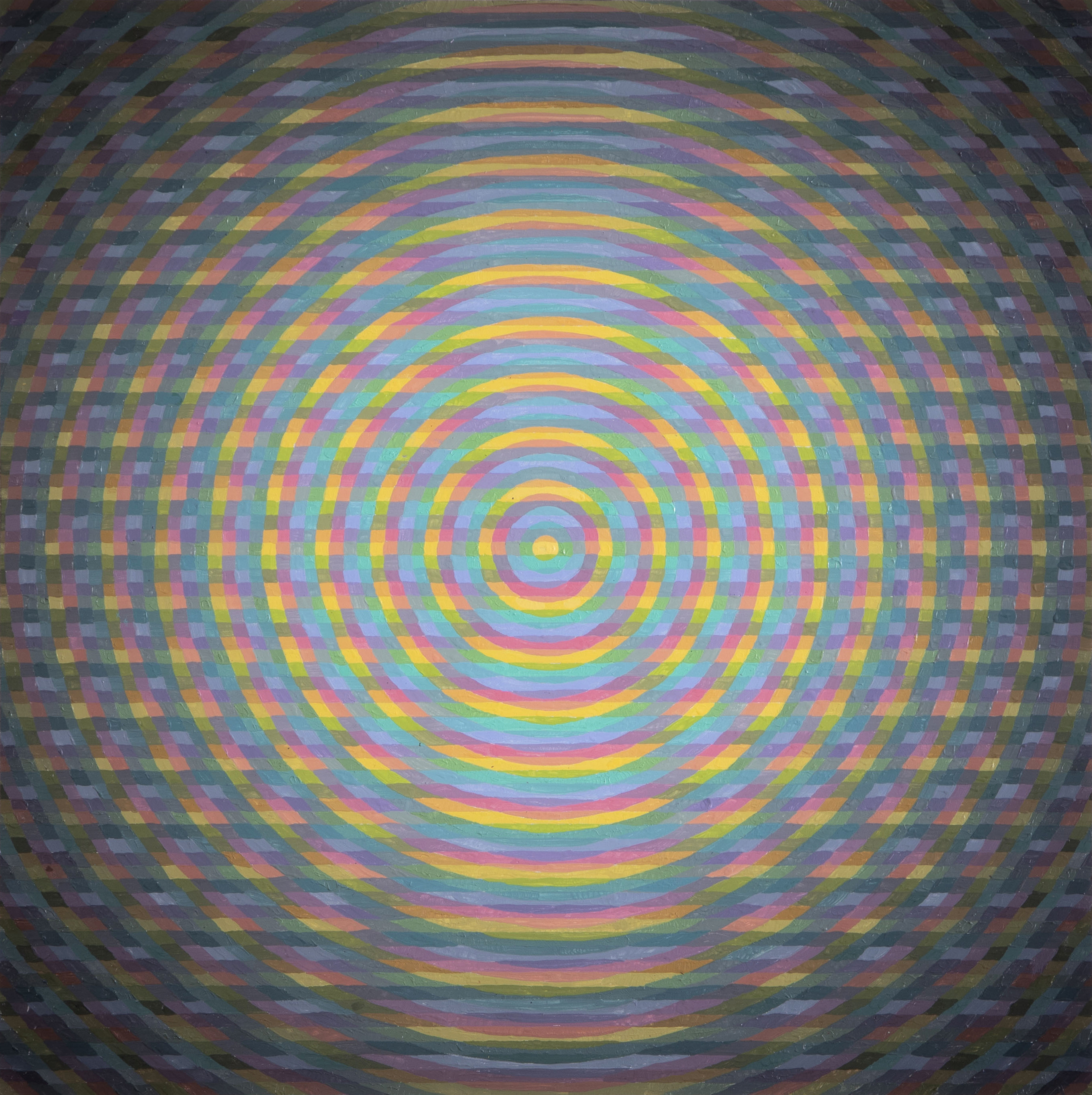
Brianna Bass, Shadow Interference Ripple (Grief) (courtesy of the artist)
RB: Do you experience synesthesia?
BB: No, but I think all artists train themselves synesthetically. From my first drawing classes I was urged to forget the names of things, breaking down the boundaries of language and visual experience. This opens us to the multivalent evocations of color and form. The more time I spend with art, and the more paintings I see, the deeper I forge a synesthetic relationship with color.
RB: Do you use any other tools besides brushes to make the marks in your paintings?
BB: I just use a brush. I mix Golden fluid and heavy body acrylic paint to get the right consistency, and for each mark, I try to get the perfect scoop on my brush. I plop the blob on there and watch how far the line goes until I need another scoop. It’s fun.
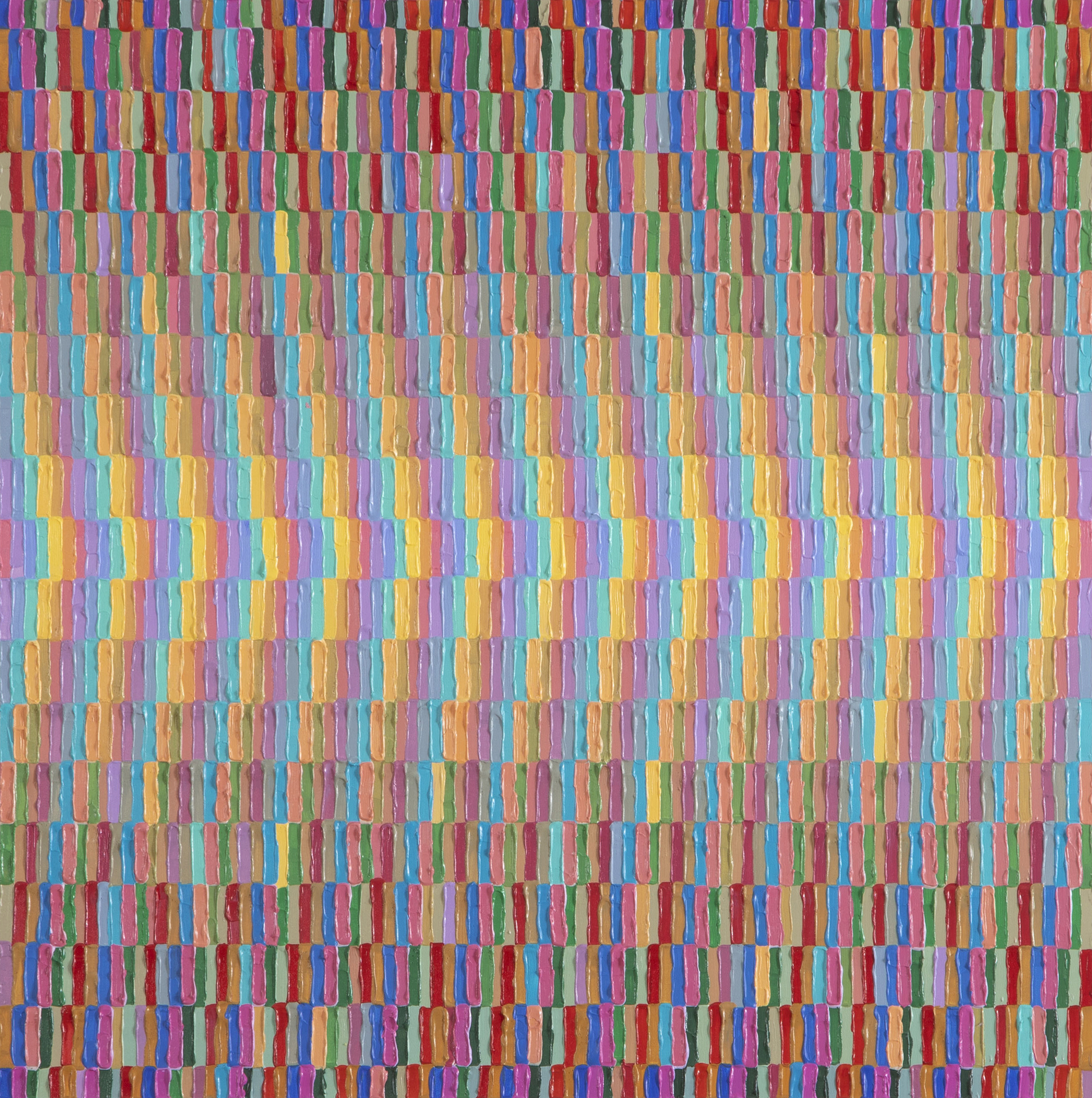
Brianna Bass, Cascade (courtesy of the artist)
RB: Do you still do aerial and architectural photography? Is there a common thread between that work and your paintings?
BB: I still do! That’s my day job, not really a body of work. I probably compartmentalize my life too strictly sometimes, so I haven't given too much thought to the visual and psychological impacts of flying and architectural photography. Some of my favorite things to see while flying are tractor trailer trucks parked at warehouses or piled high at shipping ports. I’m so attracted to random colors in uniform shapes. In my work, I’m very interested in producing randomness through methodical processes. There is also something to be said about shifting back and forth between being embedded within a system, and surveying it from above. Constant awareness of light is also a reason my job and paintings align. It’s all about light all day long forever and I'm happy about that.
RB: In “Dream Sketch Project,” you sketch your dreams every morning. Have you gained any insights about yourself or your subconscious through this exercise? Were you surprised by any patterns or themes?
BB: Something I have noticed in reviewing these drawings is that while they make for really fun zany vignettes, they aren't really aiding me in the way that I wanted them to. The act of drawing does help me visualize the world I just woke up from, but after looking at the drawing again, the field of memory itself fades and is replaced by the sketch. So, the drawing is blinding me to the subject. A possible solution might be to draw the dream and never look at it again. Maybe the problem is publishing the drawings, which shifts my place of observation from the original event to the drawing. Anticipating what everyone else sees replaces the actual memory.
Writing about dreams has been different. In writing about a dream and then reviewing it later, the visual depth is preserved a lot better. I’m a lot happier when I remember my dreams. I move through the world differently when I can sense that vast inner world which shimmers behind everyday spaces.

Brianna Bass, Sheet Music Translation (After the Gold Rush) (courtesy of the artist)
RB: You are a founding member of Mineral House Media, an online curatorial collective with a monthly digital residency. As a founder of a collective that operates largely online, do you have any thoughts about the current state of brick and mortar galleries and the role of curators?
BB: It is so critical for communities to have a robust physical gallery presence. Nothing compares to experiencing works of art in person. As an online presence, we want to serve as connective tissue, exposing, elevating, and connecting gallery spaces and artists across art communities. Because we are primarily based online, we have been able to showcase a fusion of southeastern and nationally-based artists. For me, MHM embodies the genuine ideal of doing what you can with what you have. There is a freedom of movement that operating online affords, for us as curators, and for our participating artists. While physical spaces have the privilege of sensory experience, online operations have the opportunity to really dig into the work, analyzing motivations, sharing processes, and enriching the relationships between artist and observer. Locate Arts has been massively inspiring for us. I can’t imagine being part of a community where this kind of central connective system has not been forged.
RB: I saw that you’ve recently been traveling in Japan! What was the coolest thing you saw art-wise or other?
BB: I went to the teamLab Borderless digital light exhibition in Tokyo. It was really amazing, with a lot of Kusama-like mirror installations that were like being inside a crystallized thunderstorm or a molecule. It was so dazzling, but I wasn’t expecting it to be as emotionally moving as it was. One moment that got me was in a room where synchronized light beams dipped in and out of reach. Adults and children alike chased the beams, stretching to touch them. Hearing people gasp when something total suddenly happened (the room fills with light), woke me up to the beautiful relationship people have with light, matter, and mystery.

Brianna Bass, Shadow Map II (courtesy of the artist)
RB: What are you working on now and what’s next?
BB: I am currently working on some new pieces for my solo show at Fluorescent Gallery that opens on February 7th. The current paintings are about incorrectly bridged gaps in information. I just got my dad’s audiogram, and am interested in translating his significant hearing loss into a painting or generating a system of painting from it. I have ordered sheet music by Jessie Montgomery, a contemporary composer, and am looking forward to painting from it. I am also in the process of applying to graduate school(s) so a lot of my time is devoted to that.
on the hum, feat. new paintings by Brianna Bass, opens Friday, February 7 (6-10pm) at Fluorescent Gallery (Knoxville).
Brianna Bass is a painter currently living and working in Knoxville, Tennessee. She received her BFA from the University of Tennessee at Chattanooga in 2013. In 2017, she co-founded Mineral House Media, a digital residency and curatorial platform focused on elevating artists through the publication of analytical media coverage. She is an aerial and architectural photographer which enables her to travel and connect with artists across the region.
Rachel Bubis is a Nashville-based independent arts writer, regular contributor to The Focus blog, and LocateArts.org Web + Print Manager for Tri-Star Arts.
* all images courtesy of the artist
